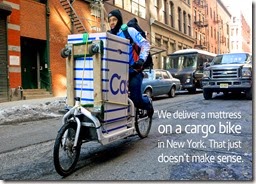Icon-wise, this was not a good week for Baby Boomers.
First came the news that Joni Mitchell is in a coma. This turned out to be more rumor than news. Yes, she’s in the hospital but – according to her website – alive and well-ish.
Having been a major fan of Joni’s in my youth, I’m not quite ready for her to pave paradise.
But there’s rumors of coma, and then there’s news of death, and Jack Ely, lead singer for those one-hit-wonders, The Kingsmen, died the other day at the age of 71.
I don’t remember the first time I heard Louie, Louie – no doubt it was on Worcester’s rockin’ WORC 1310 on your dial, or on WBZ 1030 AM Boston (“This is the address of the sweet sound of success”), which was the far cooler and more sophisticated radio station to listen to. But I do know that I heard it played at every god-awful mixer I went to at St. John’s High.
Along with Wooly Bully, by the inimitable Sam the Sham and the Pharaohs, Louie, Louie was pretty much the signature dance tune of my high school era.
Personally, I preferred Wooly Bully. The words didn’t make a tremendous amount of sense but you could at least understand them. Unlike the muffled, incomprehensible lyrics to Louie, Louie.
Which was, of course, the genius of Louie, Louie.
As the Lovin’ Spoonful once told us, there’s magic in the music. And the magic in Louie, Louie was the delicious rumor that its words were obscene.
In a world in which six-year old know all the lyrics to “Good Girl (I Know You Want It)”, it’s amazing just what a big and imagined deal this was.
Nobody actually learned what the words were, or even made a stab at writing them down that I know of. (We were nice Catholic school kids. Perhaps “the pubs”, who had far dirtier minds, were better equipped to make up dirty words.)
But the rumors….
Someone’s brother had slowed the record down and figured out what those lyrics were…
They were so awful the record was going to be banned…
A student at Princeton had secret knowledge of them, but couldn’t tell…
It was always a boy, by the way, who was in the know.
Girls? Well, we were far too delicate to even think of making an attempt to slow the record down and find out for ourselves. Cover your ears!
In truth, the lyrics are nothing much. And certainly no song that contained the words “smell the rose in her hair” and “moon above” was ever going to be obscene. Not that we knew those were in the lyrics. All you could understand was “Louie, Louie, Oh, baby, we gotta go.” (By the way, for someone who’s never heard of the sixties, that’s Loo-I, Loo-I, by the way. You could always tell the finks who didn’t listen to radio of go to god-awful mixers. They’d only read about it and said “Looey, Looey.”)
The garbling of the lyrics was unintentional.
When it came time to do [make the recording] Ely discovered the sound engineer had raised the studio's only microphone several feet above his head. Then he placed Ely in the middle of his fellow musicians, all in an effort to create a better "live feel" for the recording.
The result, Ely would say over the years, was that he had to stand on his toes, lean his head back and shout as loudly as he could just to be heard over the drums and guitars.
It might not have helped, either, that the 20-year-old musician was wearing braces at the time, although Ely maintained that the real problem was trying to sing with his head tilted back at a 45-degree angle.
In any case, the end result was that about the only words anyone could clearly understand were contained in the song's first two lines: "Louie Louie. Oh no. We gotta go."
But the driving, three-chord instrumental progression was maddeningly memorable, as were the song's opening lines, delivered with just the right amount of rebellious if slurry snarl. (Source: Huffington Post)
Perfect touch that Ely was still wearing braces when he recorded this classic.
But those braces did not keep the song from being investigated by the FBI. Here’s from the FBI vault:
In 1963, a rock group named the Kingsmen recorded the song “Louie, Louie.” The popularity of the song and difficulty in discerning the lyrics led some people to suspect the song was obscene. The FBI was asked to investigate whether or not those involved with the song violated laws against the interstate transportation of obscene material. The limited investigation lasted from February to May 1964 and discovered no evidence of obscenity. (Source: FBI.gov)
February to May 1964? Shouldn’t those guys have been out investigating whether Lee Harvey Oswald acted alone?
But I suppose paranoia about youngsters running wild in the streets, fornicating to the tune of “Louie, Louie”, would have been right up J. Edgar Hoover’s alley. After all, today it’s “Louie, Louie,” tomorrow those fornicating whipper-snappers will be shaking their fists at the White House and chanting Hey, hey, LBJ, how many kids did you kill today? “Louie, Louie” as gateway drug. No wonder the FBI thought they were on to something.
Here’s a link if you’re up for feelin’ groovy.
As for me, oh, baby, we gotta go.
So did Jack Ely.
Thanks for the memories!



